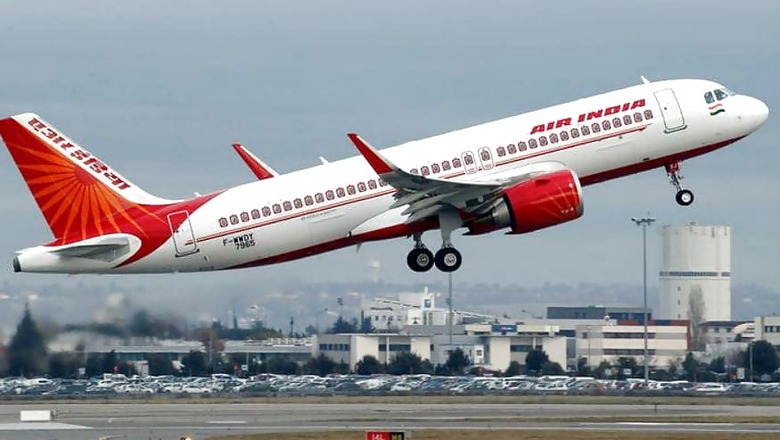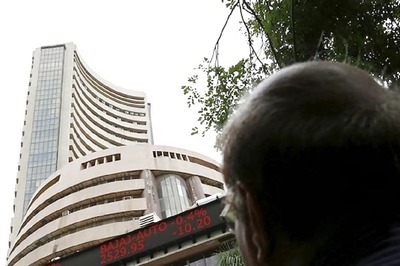
views
New Delhi: The UPA government failed to find a solution to the Air India mess, continuing to feed this white elephant till its last days. It had approved a mammoth bailout package with annual equity infusion to strengthen the balance sheet of Air India and these infusions continue till today.
When the Narendra Modi government came to power, there were widespread expectations that it would rid the nation of a cash guzzler like Air India. And it did make a feeble attempt to sell off the perpetually loss making airline. But that one, half-hearted attempt bombed and things are back to square one. So now, following in the footsteps of the UPA, the Modi government is also mulling a fresh bailout package for Air India. One is not clear whether this is in addition to continuing equity infusion under the UPA package or not.
A recent news report quotes unnamed officials of the ministry of civil aviation to say discussions are ongoing with the Finance Ministry for a Rs 11,000 crore bailout package for Air India. “Sources in the know said that the civil aviation ministry is working on a bailout package for the carrier, which would be utilised to reduce high cost working capital loans. The proposal, which is at a preliminary stage of discussions, is for providing around Rs 11,000 crore package to Air India.”
Under the UPA-approved Turnaround Plan (TAP), all government guaranteed aircraft loans and interest thereon are being paid by the government by way of equity infusion. And under a Financial Restructuring Plan (FRP) which runs concurrently, high cost working capital loans have been converted into long term debt carrying lesser rates of interest to reduce the financial burden on AI.
“The TAP/FRP includes budgetary support amounting to Rs 30,231 crores spread over 10 years i.e. up to FY 2020-21 and also equity support for the payment of principal/interest of the Non Convertible Debentures. AI has received equity infusion of Rs 27,195.21 crore till FY 2018,” Lok Sabha was informed recently.
No one can question the need for massive recapitalisation of Air India, given the government’s seemingly weakening resolve to sell off the airline. Remember, another full service carrier – Jet Airways – which is the second largest Indian airline by passengers and follows AI’s model of service, is also facing intense headwinds as fuel prices have risen and fares have remained depressed.
India is a high cost market for airlines, with jet fuel highly taxed and the (full service carriers) FSCs are particularly vulnerable to cost pressures, given their high cost model of operation even excluding fuel. So in this scenario, AI surely needs more capital.
But a bailout package for AI does not show any serious application of mind to devising a long term strategy for the airline. This sort of piecemeal approach is unlikely to solve the AI conundrum. Faced with a similarly hostile environment, Jet has already embarked on a massive cost rationalisation exercise while also trying to significantly expand fleet and rationalise routes.
What is the government doing to make AI operationally more efficient? Is there a lens on costs? There seems to be no massive fleet induction plan for AI either, when all other Indian airlines are lining up aircraft purchases in an expanding market.
Also, not enough attention is being paid to beefing up the top management. There have been persistent rumours of the current Chairman and MD looking for an exit and one is not clear if any aviation professional (instead of babus) will ever be allowed to steer the airline.
It is pertinent to note that a few days back, the government appointed two stalwarts of India Inc – Y C Deveshwar and Kumar Mangalam Birla – to the board of AI as independent, non-official directors. Undoubtedly, these veterans have weathered many a storm and managed to steer their businesses to safety and profitability more than once. But even with those impeccable credentials, Birla and Deveshwar could find pulling Air India out of its tailspin a herculean task since the national carrier continues to be dragged down by the bane of India’s public sector companies—patronage and bureaucracy. Besides, will they even be heard, given AI’s past record of totally ignoring independent directors’ recommendations?
In Parliament, government has been saying that it has not dropped the ball on AI disinvestment but is merely dressing up the bride for a suitable occasion. And analysing the reasons for its failure to attract bidders in the first attempt, the government has said in Parliament that retention of 24% stake in the disinvested entity besides some other bid conditions deterred potential investors.
In a written reply in the Rajya Sabha last week, MoS civil Aviation, Jayant Sinha, showed the government’s reluctance to part with AI. Sinha said that the government had no plan to exit Air India altogether.
Since retaining a minority stake was one of the reasons for no interest from any potential bidder in the sale process, doesn’t this clearly show that the government has all but abandoned plans to sell the airline?
Air India is meanwhile already struggling through acute shortage of funds. An airline official had said on condition of anonymity earlier that as many as nine aircraft were on ground due to non-availability of spare parts as the airline struggled with inadequate working capital. Payments to vendors and lessors have been also pending. The airline had sought a little over Rs 2,000 crore for this fiscal earlier but only Rs 650 crore has come in so far. Now, one hears that salaries for July are delayed due to acute cash shortage.
Since the government is visibly reluctant to sell the airline, it has no option but to keep infusing equity into it. And with endless government support, bureaucrats and politicians are sure to enjoy a free run of the airline. Just like in the UPA era.
(The author is a senior journalist. Views are personal.)


















Comments
0 comment